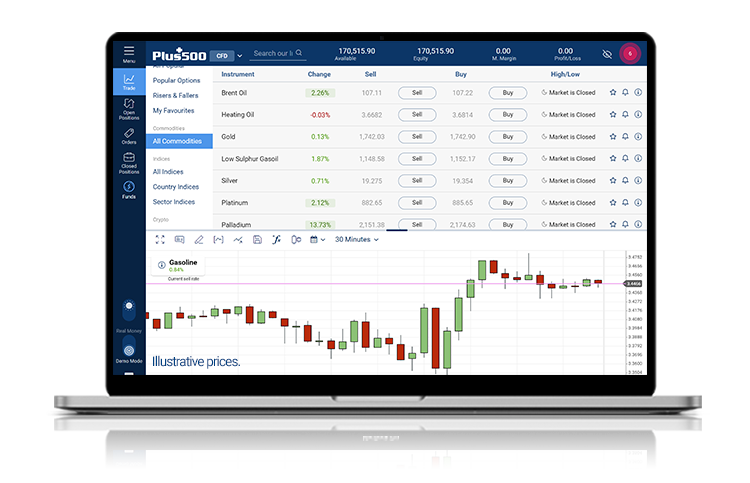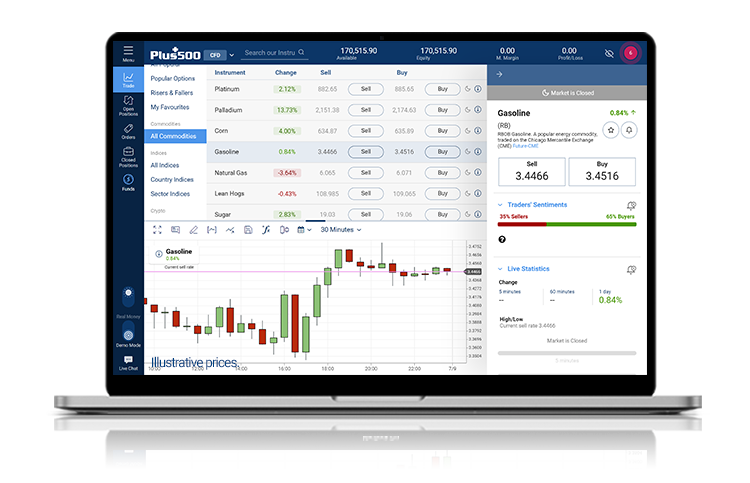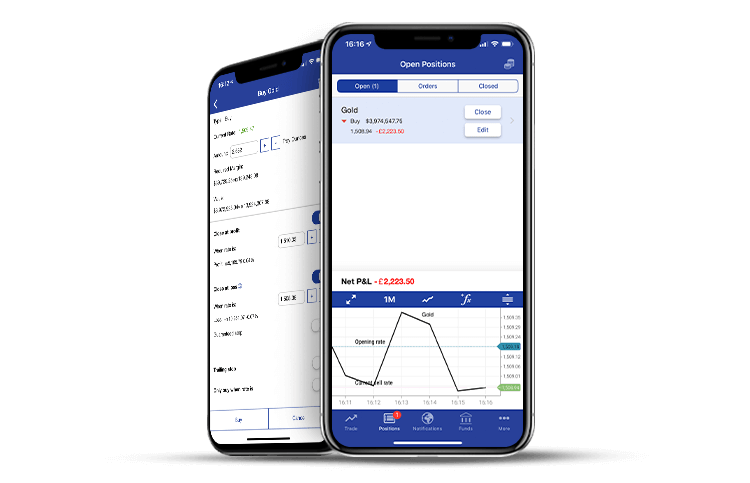How to Trade Commodities With CFDs
The commodity market is one of the oldest financial markets. Today, traders have the option of trading commodities on the futures market or through derivatives such as Contracts for Difference (CFDs). Trading commodities through a CFD service has several unique features. These include lower capital requirements than trading with futures and being able to trade on both rising and falling markets. In this article, we will go through the ins and outs of trading Commodities with CFDs.
Who Is Trading Commodities?
Traditionally, those who wanted to trade commodities were the producers and the consumers of the commodity, or speculators such as investment banks, fund managers and other financial institutions. Recently, the commodity market has become much more accessible to the average retail trader, allowing them to speculate on price movements of the commodities traded in the market - instead of actually owning them.
Futures vs. CFDs on Commodities
In the past, the futures market has been the most direct way to access trading in commodities. Futures contracts are legal agreements to Buy or Sell a particular commodity at a predetermined price and at a specified time in the future, and they generally demand a larger allocation of capital.
Another method for the modern-day commodities investor is to trade via contracts for difference (CFDs). Before exploring this method, it is important to understand what CFDs are. CFDs are derivatives between two parties; a buyer and a seller, or a trader and a CFD provider (like Plus500) that states that the buyer must pay the seller the difference between the current value of the financial instrument and its value at the time the contract is entered into. CFDs are a derivative product that allows traders to speculate on the price movements of the underlying instrument without taking actual ownership of the product itself. Furthermore, CFDs are considered an efficient way to trade popular commodities - such as Oil, Natural Gas, Gold or Silver - due to higher leverage, which enables a trader to use less capital to gain greater exposure to an underlying instrument, increasing potential for losses as well as profits.
The Basics of Commodity CFDs
CFDs allow you to trade on margin. This means you are only required to deposit a percentage of the total value of a trade. In other words, you have the option to allocate significantly less capital when trading in commodity CFDs as opposed to futures contracts. In addition, CFDs offer a straightforward way to potentially profit from both rising and falling markets. For example, a trader can still profit from a falling market by opening a ‘Sell’ (or short) position, meaning they have the intent to sell high and buy back low. The profit will be the difference between the selling price and the purchase price.
Today, it is possible for the average retail trader to trade in a wide range of assets with CFDs. Plus500 provides clients with a user-friendly trading platform where they can trade CFDs over commodities such as Gasoline, Gold, Heating Oil, Natural Gas, Oil, Brent Oil, Palladium, Wheat, Soybeans and more. You can execute a real-price trade using a Demo Account with just a few clicks - straight from your desktop, mobile or tablet. To sign up or log in, click here.
Quick Steps to Start Trading Commodity CFDs:
The following steps explain how to open a trade using Plus500's intuitive online trading platform:
Step 1: Select your market
Decide on what type of commodity you want to trade. With Plus500, you can choose from popular commodities such as Oil or Gold.

Illustrative prices.
Step 2: Select the direction of your trade
If you think prices will rise in the near future, you can ‘go long’ or Buy. However, if you think prices will fall, you can ‘go short’ or Sell on your market position.
Step 3: Set the volume of the trade
Once you have decided on the commodity and the direction of the trade, you need to decide how many units you want to purchase.

Illustrative prices.
Step 4: Use risk management tools
Trading CFDs involves risk. As such, it is important to control your trading risk by utilising risk management tools such as Stop Loss (Close at loss) and Stop Limit (Close at profit).
Step 5: Monitor your position
After a trade is placed, you should monitor its status and funds available in the account on an ongoing basis as the market might move against your position abruptly.

Illustrative prices.
It is important to remember that you do not own the underlying asset when trading commodity CFDs. Always keep in mind that you should never trade more than you can afford to lose.
This article contains general information which doesn't take into account your personal circumstances.
